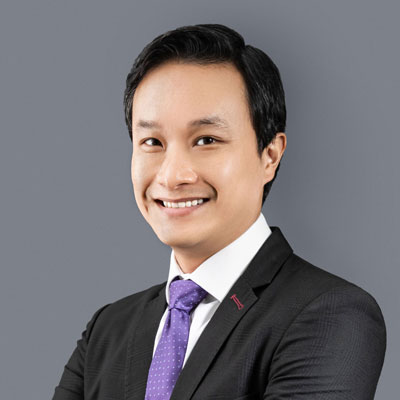
精选观点 & Webinar
Below is a quick summary of what you need to know regarding this weekend’s G20 Xi-Trump meeting and our thoughts on impact for Asian and Chinese equities.
Dec 03, 2018
For the past 5 years, the surest trade in finance was to bet on US technology stocks and watch market caps double and portfolio returns roll in. However, the last few months have shaken that confidence and now many investors are asking what’s next, given the diminishing growth picture globally. Asian companies focused on innovation offer an interesting opportunity in this regard, especially considering the correction so far and their potential going forward. Though many VC and tech investors have already made the shift to Asia, that move is yet to occur in public equity markets. We believe our Premia Factset Asia Innovative Technology Index, and its corresponding ETF, 3173 HK, should be in every global and tech investors toolkit.
Nov 27, 2018
On the 1 year anniversary of our China A smart beta ETFs, we thought it prudent to reflect on how 2803 HK and 3173 HK have done since launch, as well as take stock of China A-shares markets overall. In this note, we’ll recap the ETF performance and tracking, review China A-shares over the last 12 months, explore which factors worked and didn’t and offer a few thoughts about our expectations going forward. Thanks as always for reading and trusting us with your investments.
Nov 08, 2018
您的科技主题ETF仍然持有谷歌和脸书吗?您是否想知道全球行业分类标准(GICS)、标准普尔及摩根斯坦利在行业分类重新调整后的变动?在接下来的线上研讨会中,我们的合伙人赖子建先生及麦睿康先生将为您阐述此主题,包含行业重新分类对科技主题ETF及亚洲的影响,以及Premia Partners挑选新经济和创新科技成分股的策略如何快人一步,而且早已超越GICS对全球行业分类的定义。
Oct 22, 2018
当全球投资者泛泛地将整体新兴市场视为单一的风险,新兴东盟早已悄悄地从全球新兴市场中脱颖而出,并且自今年七月的谷底反弹回升。之所以说”悄悄地”是因为几乎没有人谈论它,大多数的财经媒体更关注中美贸易战、土耳其货币剧贬、阿根廷经济危机或其他存在潜在风险的议题。东盟很少成为媒体的宠儿,或许是因为东盟的故事无关乎动荡或危机,而是持续性的成长和投资机会。
Sep 27, 2018
中国A股在今年6月被纳入摩根士丹利指数(第二阶段将在两週后落实),然而,年初迄今的中国市场却持续走软,这不禁使许多投资者感到疑惑——中国发生了什麽事?疲软的股市是由于宏观经济数据下滑、公司基本面的恶化,还是全球贸易战引发的避险情绪?在本篇文章中,我们将分析回顾年初迄今的中国市场,并展望下半年的投资情势:
Aug 17, 2018
每天清晨,我的小米人工智能音箱“小爱”会准时叫醒我并播放新闻和天气预报,我会透过美团订购早餐到公司,并以支付宝付款。有时候,我会骑摩拜单车出门到附近的地铁站,或用百度地图直接打车。百度会找到最近距离的滴滴出行或其他打车服务平台司机,并为司机选择从家到公司的最佳出行路线。路上,我会翻阅我的微信朋友圈和常用的微信公众号;此外,我还可以透过我的手机,查看我的智能手表和智能秤同步的最新健身成效数据,甚至远端重设家门密码给清洁工人或遥控居家各种智能电器。 随着物联网时代的来临,数字转型正迅速地将那些我们曾经在电影里幻想的未来科技,实现在我们的日常生活中。例如,中国科技巨头腾讯透过其微信平台将通讯应用程序的概念提升到一个全新的水平,该平台结合了即时通讯、社群网络、搜索引擎、电子商务购物平台、缴费支付系统等多项功能,为用户建立了集合衣食住行的生态系统,使用户几乎可以在微信平台上解决生活中的大小事。根据微软最新研究预测,2021年亚太地区将有超过60%的国内生产总值(GDP)来自数字产品和服务。在本文中,我们将深入探讨Premia亚洲创新技术ETF(3181HK)所着重的3个数字技术相关领域:• 电子商务 • 大数据和云计算 • 人工智能电子商务 — 阿里巴巴、京东正如我们先前发布的文章〈China Consumer is King〉中提到,阿里巴巴旗下电子商务平台天猫在2017年"双11购物节"创下单日销售额250亿美元的超高纪录,是美国黑色星期五和网络星期一(2个美国重要的购物节)总销售额的3倍。天猫在11月11日在24小时内共完成8.12亿份订单,相当于每秒涌入9,400份订单。而中国另一家电子商务巨头京东也在当天以及京东平台的6.18购物节创造了巨大的销售业绩。除了惊人的销售数据外,整个电子商务生态系统的扩张其实更值得关注。首先,移动支付已成为主流,90%的支付是通过手机支付,相比3年前此占比仅约40%,这主要归功于支付宝和微信支付等工具的日益普及。另外,大数据和自动化技术也充分地应用在供应链物流中,使电子商务生态系统如虎添翼。如天猫利用智慧物流,计算距离顾客地点最近的仓库发货,"双11购物节"的首张订单仅花12分钟就送到顾客手上;而京东也已正式启用无人机配送计画,并为未来实现从仓储管理到最终配送交付的一条龙自动化网路做了大量投研和基础建设。大数据和云计算 — 百度、Naver、腾讯、阿里巴巴、乐天在这个变化快速的科技世代,大数据在业务分析、深度学习和人工智能的进展皆扮演了至关重要的角色。根据国际数据资讯公司预测,2020年亚太地区的大数据商机将高达650亿美元,而根据此趋势未来将带来更巨大的收益。在大数据分析的产业生态中,经营搜寻引擎、社群媒体网站及电子商务平台的企业无疑收集了海量数据——百度、Naver、腾讯、阿里巴巴和乐天,也毫不意外地成为大数据分析领域的领先企业。与此同样自然衍生的业务扩展还包括这些企业不约而同地进入云服务和云计算领域,利用其数据与平台为其他机构提供服务,包括软件即服务(SaaS),平台即服务(PaaS)和基础架构即服务(IaaS)等产品。虽然与亚马逊或微软相比,百度、Naver、腾讯、阿里巴巴和乐天合总计的市场份额仍然很小,但这些亚洲平台对于亚洲当地大数据分析和人工智能发展仍然是重要的基础设施。应用层面来说,行为预测是大数据与人工智能、机器学习等技术应用最广泛的领域,从电子商务基于消费者过去浏览纪录以推销相关商品,到地图应用程式在使用者经常的下班时间推送常用路线交通状况,这些科技的应用早已渗透在我们的日常生活。人工智能 — 一种赋能技术,而非产品人工智能的研究已发展逾半个世纪,自理论计算机和人工智能之父阿兰.图灵(Alan Turing)于1950年发表了催生人工智能发展的论文《计算机械与智慧》,并提问"机器会思考吗?",人工智能已走过数十年漫长的发展历程。"人工智能(AI)"是一个相当广泛的概念,其范围从游戏、机器人、营销至金融科技、交通、医疗保健和教育等领域应有尽有,另外,概念上也包含上述的云计算及支持人工智能所需要的各种硬组件,如传感器、半导体、数据基础设施等等。为此,我们撰写了〈人工智能和机器人技术领域的领先企业〉一文进一步以案例研究,向大家介绍人工智能和机器人技术领域中领先的亚洲公司:- 安全和监控:海康威视 - 医疗保健:科大讯飞 - 消费电子:索尼 - 工业自动化:发那科 - 联网汽车:三星、百度
Aug 13, 2018
人工智能(AI)和机器人技术代表着一个长期的变革性转变,会影响到企业运营和人们生活的方式。最近几年,人工智能和机器人技术的迅速发展已经颠覆了从制造业到医疗保健,运输业等的各行各业,并正持续扩展到各个领域。世界经济论坛指出人工智能和机器人自动化技术正在从根本上改变全球经济,可视为蒸气,大规模生产和电子产品之后的第四次工业革命。先前我们曾讨论数字化转型正在如何改变我们的生活方式。在这篇文章中,我们将进一步探讨机器人技术,人工智能及其应用领域,并以我们最近推出的Premia亚洲创新科技ETF(3181 HK)中的领先企业为例。人工智能和机器人技术是什么?机器人技术是一项集工程学与计算机科学的跨学科技术,它涵盖了机器人的设计、构造、操作、使用,以及用于控制、感测回授和信息处理的计算机系统。机器人技术催生出能够取代人力的自动化机器,能在工厂里或危险环境运作,并进一步提升生产力。根据国际机器人协会统计数据,2017年全球机器人销售数量超过38万台,较五年前已成长逾两倍。全球工业机器人的前三大市场更集中于亚洲——中国、韩国和日本,其销售总和占全球比近60%。全球工业机器人销售数量资料来源:国际机械人协会,Premia Partners整理人工智能对许多人来说是一个因谷歌AlphaGo而变得为人熟悉的新兴主题。然而,它已经发展了很长时间,并且是个广泛的概念。维基百科定义说:“人工智能亦称机器智能,指由人制造出来的机器所表现出来的智能个体,展现相当于人类和其他动物的智能水平。”人工智能(AI)、机器学习(Machine Learning)和深度学习(Deep Learning)等术语并不相同,但却时常被混淆;简单来说,人工智能是机器智能,执行以往必须人类才能完成的任务,它广泛地涵盖了机器学习(ML)和深度学习(DL)两个子研究领域。愈来愈聪明的人工智能大脑,结合愈来愈敏捷的机器人身体——这两项技术领域的进步,正在共同改变我们实行操作、分析数据及思考决策的方式。以下我们将更深入了解几个亚洲领先企业案例:人工智能与视频监控:图像识别领导企业 —— 海康威视资料来源:海康威视海康威视是一家致力于提供智能视频监控解决方案的中国公司,是目前全球最大的安防监控设备制造商之一。自2001年成立以来,海康威视在视频监控行业的领导地位不断巩固,不仅拥有视频编码及视频图像处理等核心技术,更长期投入高额研发资金。近期推出的旗舰产品HikCentral视频管理系统,具有人脸识别,人脸配对,人脸搜索和人数统计功能,并结合安全访问控制和警报系统,融合多项技术至单一智能平台,提供更完整的商业安防智能解决方案。在过去几年中,海康威视已将业务扩展至众多其他领域,如运输,教育,医疗保健和工业自动化。海康威视以视频监控为核心的人工智能技术,使其在物联网时代下的智能城市和智能家居发展中,皆扮演重要的参与角色。人工智能与医疗保健:语音识别领导企业 —— 科大讯飞资料来源:科大讯飞科大讯飞是中国语音识别科技领域首屈一指的领导者,亦是全球语音人工智能技术的领先企业。科大讯飞在2017年《麻省理工科技评论》公布的"全球50大最聪明公司"名单中名列第6位,亦是全亚洲排名最高的公司。在技术方面,科大讯飞利用深度学习进行语音识别、自然语音处理及机器翻译等领域的研发,其技术已达国际顶尖水平。该公司技术在中国得到广泛的应用,如法院使用其语音识别技术转录冗长的诉讼程序;商业传呼中心使用其语音合成技术产生自动回复;中国最大叫车平台滴滴出行也使用其语音技术向司机广播订单。科大讯飞持续拓展人工智能领域,近期更投入大量资源拓展医疗保健领域,旗下"智医助理"机器人以中高级水淮成绩通过中国国家临床执业医师考试,目前已在多家医院投入使用。这款人工智能机器人可根据患者描述的症状,指引患者至正确的门诊部门,并且以语音听写技术协助医生获取患者信息,甚至分析病人资讯进行初步诊断。机器人技术与家庭娱乐:消费电子领导企业 —— 索尼尽管机器人技术于生活上的应用近年来才受到各界的高度关注,日本消费电子巨头索尼公司早自上个世纪已经致力于人工智能及机器人技术的发展。该公司自1999年发布居家娱乐型机器狗AIBO后,不断研发其核心人工智能技术,近期推出重新设计的进化版电子宠物狗AIBO,这款进化版AIBO具有先进的人工智能核心系统,是一只娱乐型自动机器狗,可以与主人形成情感连结并取悦主人。此外,通过人脸辨识技术,AIBO还可以自主学习适应主人的独特性格并熟悉居家环境,甚至可以随着时间的推移发展自己的个性。最近,索尼公司更与卡内基梅隆大学合作开发餐饮机器人,应用于食材制备、烹饪和运送,其成果可以拓展到研发可处理复杂多变任务的机器人,预期未来将能有更广泛的技能和行业应用。索尼的居家娱乐型机器狗 — 智能AIBO的设计资料来源:索尼机器人技术与制造业升级:工业自动化的领导企业 —— 发那科资料来源:发那科自1970年代初期以来,发那科就已经是机器人及自动化领域的领军企业,该公司专注于开发电脑数值控制(CNC)系统,是一种应用机器人技术的机器,可以以高精淮度和高效率执行馈送指令。发那科作为产业先驱,一直致力于透过机器人技术优化工业制造流程。自2001年以来,该公司就已倡导并全方面运营”关灯工厂”模式(即没有工人,不需要开灯也可以运作的工场)。它们的机器人以每24小时制造50个机器人的速度运作,并且可以在无人监管下运行长达30天。最近,发那科更与美国半导体巨头英伟达合作,利用人工智能技术使工业机器人具备自主学习能力,进一步提升工厂生产力。人工智能与网联汽车:三星、百度资料来源:三星、百度人工智能驱动的破坏式创新,普遍被认为将对运输业造成大规模的变革,自动驾驶是近年来最热门的研究和讨论话题之一。尽管完全自动化驾驶汽车目前仍存在障碍,但电动汽车和智能汽车的成长趋势十分强劲。亚洲科技巨头如三星和百度一直处于亚洲智能汽车技术开发的前沿,不仅能有效利用先进的传感器、全球定位系统和雷达系统获取数据,更能有效辅助驾驶系统;并且透过虚拟助理及智能物联网设备,使智能汽车成为个性化的工作场所、娱乐中心及数字化生活生态系统的重要角色。百度和哈曼国际(三星的全资子公司)专注于物联网技术,双方正携手合作为中国汽车厂商开发基于云计算的人工智能解决方案,这项战略合作将使智能车具备中英双语自动语音识别、自然语言处理及语音合成功能。相关投资策略:Premia 亚洲创新科技ETF(3181 HK)其它相关文章:科技驱动创新:冲击重塑亚洲成长亚洲「数位革命」如何改变我们的生活
Aug 13, 2018
亚洲科技公司迅速掘起,并持续以颠覆性的创新衝击全球传统产业。以前提起科技创新,最先想到的是美国五大科技龙头FAANG(脸书、亚马逊、苹果、网飞、谷歌),而现在许多投资者已经将眼光移至中国互联网三巨头BAT(百度、阿里巴巴、腾讯)。事实上,科技创新对我们生活已经带来了巨大的改变 —— 在这个日新月异的变革时代,我认为「重塑」比「冲击」这个词语更贴切,因为许多创新和所谓的「破坏性衝击 (Disruption)」早已潜移默化渗透进我们的日常生活中。例如,在〈亚洲「数字革命」如何改变我们的生活〉一文中提到,数位科技几乎每分每秒存在于我们四周,而我们的生活也已经离不开许多数位科技产品。大数据、人工智能(AI)和物联网(IoT)的飞速进展,成就了互联网和信息技术之外很多具深远影响的创新变革。在这篇文章中,我们将以下列主题探讨亚洲科技创新:• 亚洲创新发展现况 • 科技创新对哪些行业影响最大? • 科技创新如何颠覆传统行业分类、影响投资策略?亚洲创新发展现况亚洲目前拥有50%的全球互联网用户、18亿社交媒体活跃用户,以及市值约750亿美元的新创独角兽公司。根据联合国教科文组织统计数据,世界前5大研发投入国中有3个是亚洲国家——排名第二的中国、排名第三的日本和排名第五的韩国,这3个国家的研究人员合计佔全球约40%。此外,这3个国家也都是全球前五大的机器人市场。资料来源: 联合国教科文组织根据《哈佛商业评论》报告,很多全球领先的公司看中亚洲的创新动能及专业的技术人才,纷纷到亚洲来开发新产品、新服务和新商业模式,甚至许多公司已经在亚洲建立其创新研发的生态系统。在创新发展的进程中,亚洲之所以能在世界各地区脱颖而出,主要因素被认为包括:1)亚洲经济成长速度高于西方发达国家;2)各种各样大量的製造商和快速成长的中产消费阶级,成就了亚洲强劲且不断扩张的消费需求;3)政府对创新行业的发展高度重视并积极支持。科技创新对哪些行业影响最大?儘管信息技术本身即属一门行业类别的称呼,但随著科技革新和时代发展,技术不再只是一种单独的行业,而是一种赋能的工具。不论是提高产量还是降低成本,几乎每个行业都可以利用创新技术获益。除了传统的信息技术行业(如软件,硬件等)外,以下行业预期将在亚洲科技驱动的迅速成长趋势下受到最大的影响:零售业:随著互联网的迅速发展与普及,线上购物以及线上到线下(O2O)的营销模式所带来的便捷与实惠,使电子商务愈受衝击并取代传统零售业成为消费者的首选。这种衝击来自互联网技术为企业带来较低的成本结构及较高效的物流配送。在〈亚洲「数位革命」如何改变我们的生活〉文章中,我们也谈到中国两大电子商务平台阿里巴巴天猫和京东缔造出的惊人的销售额,一次次刷新全球零售史上的纪录。此外,无论是电子商务或传统零售业,愈来愈多企业正在利用人工智能及大数据来分析消费趋势并预测顾客的消费偏好与需求。工业:在亚洲,物联网发展及人工智能应用的最前沿体现在机器人和工业自动化上。随著机械手臂变得愈敏捷俐落再结合人工智能,机器人技术的进步将创造出更具智慧、更有能耐的工业机器人,以补充或取代许多领域因作业环境危险或是人口老化而短缺的人力资源。此外,科技的进展也推动了操作流程优化、预测性维护等工业领域实现更好的表现。在〈人工智能和机器人技术领域领先企业〉一文中我们会深入举例一些在人工智能以及工业机器人领域领先的应用案例。医疗保健:亚洲人口老化趋势以及快速成长中产阶级催生了对医疗保健产品的巨大需求,2017年亚洲生命科学项目筹集投资金额高达约400亿美元。先进的数据分析技术已为製药公司的药物研发及临床实验带来巨大效益,如生理模拟可以加速药物产品的开发,基于3D打印或虚拟实境的组织建模可以协助评估潜在风险,而人工智能也已应用于诊断成像和机器人手术。此外,医疗保健的创新发展也使患者更具医疗知识且充分瞭解自身状况,如数位药丸或纳米机器人可以进入患者的身体(和血液),透过智能设备检查并提供即时数据给患者和医生。交通运输:交通运输领域正在以多种不同的形式发生变革,并影响许多分支行业。在空中,具有智能传感器和精确全球定位系统的无人机,已经实现了新的物流配送和农地耕作的形式;在路上,得益于电池储能、图像传感和人工智能算法等技术的提升,电动车和无人驾驶技术也在不断进展。此外,物联网时代也促进了交通运输中从汽车到自行车的共享经济概念。科技创新如何颠覆传统行业分类、影响投资策略? 接近20年前,标准普尔及摩根士丹利公司联合推出目前全球最常用的全球行业分类标准,即GICS®;此套分类标准目前正在进行一次大规模的更新,并预计在今年9月生效。该修订是为了使分类能更准确反映现代公司的主要运营业务,但随之也伴随著一些问题,例如:电子商务公司如亚马逊或阿里巴巴,是否该归类为非必需消费品?美国科技龙头FANG(脸书、亚马逊、网飞、谷歌)中,网飞是否应归类为非必需消费品,而脸书、谷歌则与及其他媒体业者如迪士尼等一起归类为电信服务业?基于GICS分类的信息技术主题ETF一直是捕捉该领域成长的常见投资方法,随著科技创新的广泛应用,几乎所有行业都因著科技赋能创新与成长。因此,说以「GICS = 信息技术」来投资科技领域已经过时或者被颠覆并不为过,理性精明的投资者早已将资金从传统定义的科技ETF转向更定制化的主题型 ETF,特别是在人工智能、机器人自动化、社群媒体、半导体及生物科技等领域。儘管仍有许多ETF投资经理人以广泛GICS或行业分类基准(ICB)建构其投资组合,越来越多ETF发行商,包括我们 (Premia Partners) ,已经与指数供应商合作,重新定义行业分类标准,特别是在面临传统产业分类还无法有效描述新型经济结构下的颠覆性创新主题的情况下。我们已推出的亚洲创新科技主题ETF正是与领先数据供应商FactSet合作,用其特有的精细行业分类层级辨别相关公司收入来源的具体运营业务是否属于创新科技范畴。 在〈Targeting Asian Growth Through Innovation〉文章中,我们详细讨论了指数建构的方法,而您也可以在产品详情页面上了解更多有关Premia 亚洲创新科技ETF(3181 HK)的信息
Aug 13, 2018
Every investor is worried about a new round of depreciation of renminbi (Yes, again!). Seems this topic is always an easy sell among news headlines. Renminbi began to weaken, dropping from an exchange rate (USD/CNY) of 6.24 in late March to 6.82 as of July 24, since the breakout of a trade conflict between the US and China. The latest proposal from China central bank to incentivize banks to expand lending to companies created another worry among investors on monetary easing. The million-dollar question will be how far the depreciation can go. Let’s examine this matter from a few different perspectives and get a better understanding of the current situation.
Aug 02, 2018
Premia 图说


赖子健 , CFA
CFA
Following the Xi–Trump meeting at the recent APEC Summit, market sentiment has turned cautiously optimistic on hopes of a renewed trade truce between China and the US. Some investors, however, view this détente as a sign that China’s drive for technological self-sufficiency could ease. Although the meeting did not address whether Nvidia’s latest Blackwell-series AI chips might be exported to China, speculation has risen that improving relations could lead to a relaxation of export restrictions — a development some perceive as negative for Chinese semiconductor and hardcore tech names. We take a different view. China’s determination to reduce reliance on imported technology remains firm. Recent initiatives, such as the reported requirement for state-funded data centers to adopt domestically produced chips, underscore the government’s resolve to build a self-sustaining semiconductor ecosystem. In mid-October, China Mobile also announced plans to construct the nation’s largest intelligent computing infrastructure by 2028, featuring a “100,000-GPU cluster” that will fully utilize domestic chips. Top Chinese officials have reiterated that innovation and advanced manufacturing remain core national priorities. These developments suggest that even if US export curbs were relaxed, China’s policy direction will continue to favor domestic research, production, and technological substitution. For investors looking to capture this structural growth opportunity, the Premia China STAR50 ETF provides an efficient and diversified vehicle. It offers focused exposure to leading STAR Market companies at the forefront of China’s innovation agenda — from semiconductors and AI to next-generation industrial technologies — positioning investors to benefit from the country’s ongoing technology upgrade.
Nov 10, 2025




